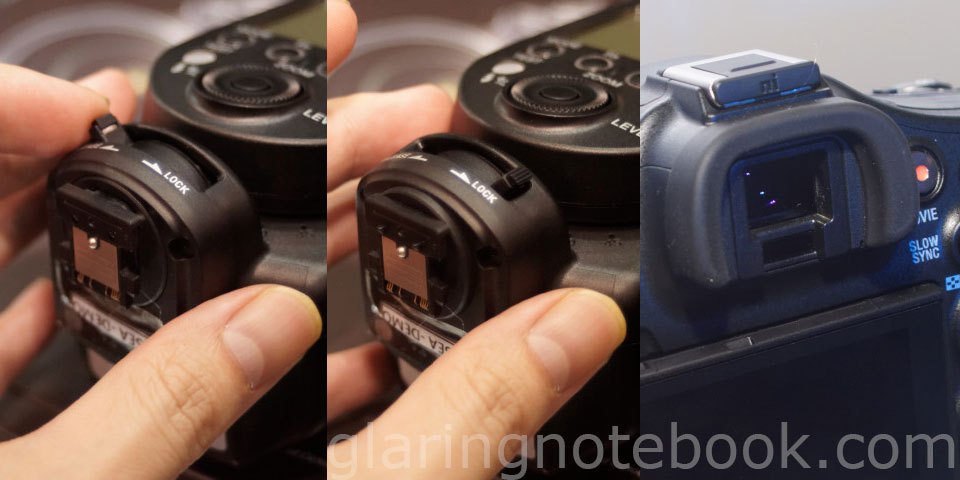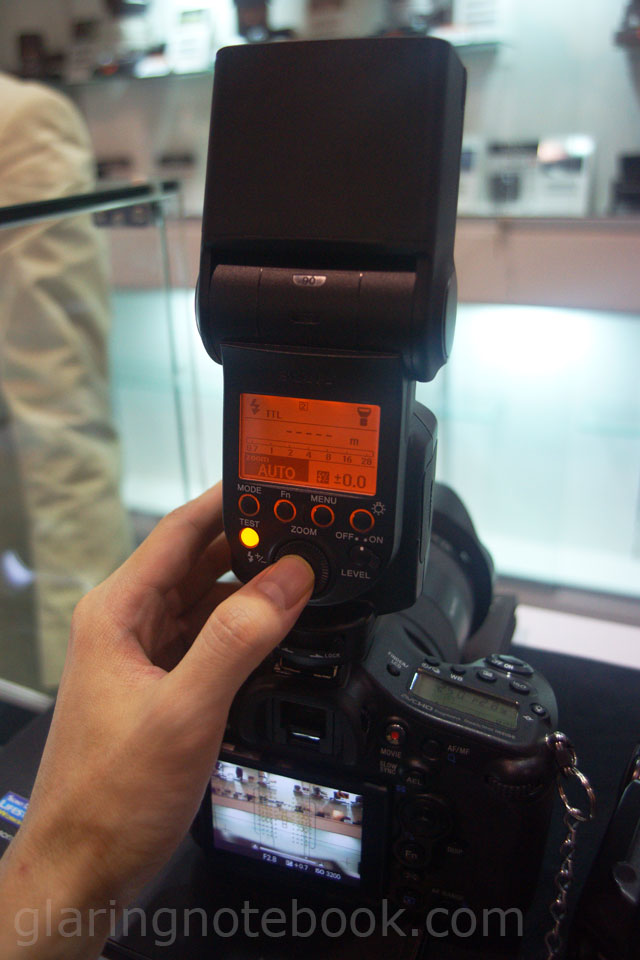
It was the 5th of October 2012, and Sony had just launched their Sony Alpha SLT-A99 at the Kuala Lumpur Photography Festival 2012!

Clockwise from top-left:
– Masahiko Ishida, Head of Digital Imaging Dept
– Gary Friedman, Minolta/Sony Alpha book author/guru, stock photographer, uber geek
– Kikuo Okura, Managing Director of Sony Malaysia
– John Shum, Head of Sony Product Workshop Department

Jeremy Teo of Red FM was the emcee.

They also launched the Sony NEX-5R, the Sony NEX-6, the Sony NEX-VG900E, and the Sony DSC-RX1!

One more with Ishida and Okura.

Estimated Retail Price:
Sony SLT-A99: RM9,299 (body only) (coming November 2012)
Sony DSC-RX1: RM9,999 (coming December 2012)
Sony NEX-VG900E: RM10,999 (coming December 2012)
Sony NEX-5RL: RM2,699 (with the Sony 16-50mm F3.5-5.6 Optical SteadyShot E-mount Retractable Power Zoom lens) (coming November 2012)
Sony NEX-5RY: RM3,499 (with the Sony 16-50mm F3.5-5.6 Optical SteadyShot E-mount Retractable Power Zoom lens and Sony 55-210mm F4.5-6.3 Optical SteadyShot E-mount lens) (coming November 2012)
Sony NEX-6RL: RM3,299 (with Sony 16-50mm F3.5-5.6 Optical SteadyShot E-mount Retractable Power Zoom lens) (coming mid-November 2012)
Sony NEX-6RY: RM4,099 (with SELP1650 and Sony 55-210mm F4.5-6.3 Optical SteadyShot E-mount lens) (coming mid-November 2012)

They also announced the Malaysia Award, under the Sony World Photography Awards.

A blown-up A99.

The Sony Alpha NEX-6.

They also had an Experience Studio, where Darren Chang, founder of Alphanatics, gave a talk.

Here’s the Sony Alpha NEX-5R, now with WiFi – it lets you transfer pictures to your smartphone via PlayMemories Mobile, as well as wirelessly tether while getting a live feed. It also improves on the articulation of the NEX-F3, being able to tilt downwards (top-left picture) as well as 180 degrees upwards (like the NEX-F3.)
On it is the Sony 16-50mm F3.5-5.6 Optical SteadyShot Retractable Power Zoom E-mount lens, a very sweet, collapsible lens! Sure, it won’t fit in my pocket the same way the Sony 16mm F2.8 E-mount lens did…

…but it’s a fair bit shorter than the original kit lens, the Sony 18-55mm F3.5-5.6 Optical SteadyShot E-mount lens.
The Power Zoom part lets you turn the single ring to zoom in and out quickly (albeit with some minor latency, which we can forgive until we can guarantee that it is a production model.) If you push the rocker you can zoom in and out smoothly and at a slower speed. If you’re in manual focus, turning the ring will manually focus instead! This works great with Direct Manual Focus enabled, where you turn the ring to zoom, half-press and lock focus, then turn the ring again to fine-tune focus.

The Sony DSC-RX1, the first full-frame digital point-and-shoot camera in the world! It has an unremovable prime lens, a Carl Zeiss Sonnar T* 35mm F2.0 with the ability to focus 20cm from the sensor. Regretfully I didn’t get to play with this – I was later told that this was a hollow mock model!

The Sony 10-18mm F4.0 Optical SteadyShot E-mount lens, an ultra-wide in small porportions and an impressive F4.0 throughout.

The Sony Alpha NEX-6, with the Sony 35mm F1.8 Optical SteadyShot E-mount lens, a tiny but amazing performer.

We then went out of the room where they had the launch, and guess what I saw on the table – the same setup I had, hanging around my neck! 2 Sony Alpha 900 bodies with Sony 135mm F2.8/T4.5 Smooth Transition Focus, how rare and unlikely!

I got the promoter lady to show us how the WiFi Transfer worked. You’d connect your smartphone to an ad-hoc WiFi hotspot that the NEX body creates, and then use the app to download the pictures.

Clockwise from top-left:
I like that the NEX-6 has Quick Navi, so you can change settings on-screen without diving into menus
– one picture has been downloaded
– you can then copy it and share it to any app, the proper Android way
– you can also connect to an access point and download apps for the NEX-5R and NEX-6. Unfortunately though, the market isn’t available in Malaysia yet.

We also saw the new HVL-RL1 ring light. Interesting battery slot orientation!

The Sony SLT-A99 through the Sony Carl Zeiss Vario-Sonnar T* 24-70mm F2.8 ZA SSM, at 24mm. Picture credits to Joseph Cheung.

Again, at 70mm. Picture credits to Joseph Cheung.

And then, for the HVL-F60M, using the new Sony Multi-interface Shoe! The A99 and NEX-6 also use this. The older one is called the Auto-lock Accessory Shoe. I was a big fan of the older auto-locking mechanism – it would lock automatically when you slide it in, and you’d just press one button to release it.
I’ve read unconfirmed reports that the HVL-F60M would come with the ADP-AMA, an adapter that allowed you to mount the F60M on older Alphas with the Auto-lock Accessory Shoe. Likewise unconfirmed that the A99 would come with the ADP-MAA, an adapter to allow you to mount an older Alpha flash with Auto-lock Accessory (Foot) on the A99. The NEX-6 meanwhile is rumored to not come with it.
To be scientific, the only way we’d know is when the production boxes come out.

Left to right:
– in the Release position, there is a moving plate
– in the Lock position, the moving plate clamps down
– here’s the Multi-interface Shoe cover, with an interesting icon.
Thankfully, you can switch to the Lock position while the flash is not mounted, and slide it on the camera without any resistance. It will stay locked, making it very similiar in concept to the Auto-lock Accessory Shoe. So my concerns were allayed – I never liked the classic ISO518 hotshoe mount because if there was impact to the flash and camera, it would behead the flash (on the Auto-lock Accessory Shoe, the flash’s little plastic foot would break but you can still mount it on, and it’s faster and cheaper to replace.)

Here’s the remains of a Canon Speedlight 580EX flash on a Canon EOS 5.

Clockwise from top-left
– in Speed Priority (10 FPS) the A99 crops out the center 2640×1760 region from 6000×4000 pixels, making it a 2.27x crop factor
– the pins on the F60M are cause for concern though, as they look like they could be bent out of place, instead of the spring-loaded pins on other brands
– you can now record videos at up to ISO6400 (compared to ISO1600 on the A77)
– the F60M has LED lights on the front for video, and you can control its power
– the bare LEDs
– the LEDs covered with a wide-angle diffuser
You cannot turn on the LED lights and use the flash as normal when pressing the shutter, unfortunately. Would’ve made for a very cool AF-assist, especially in low light!

It, as well as the top 4 buttons, glow a brilliant deep cinnabar orange. The F60M now has a rotary dial that is also a directional pad with a center button.

Head to head with the F58AM – the F60M is on the left.

Yup, it can trigger the HVL-F56AM when in CTRL/CTRL2 wireless commander mode, and the HVL-F58AM in RMT2 when in CTRL+/CTRL wireless commander mode. I don’t have a picture of the former because my SD card was in the A99, I think. I also did not get to use the F20AM to trigger the F60M because my F20AM had corroded battery contacts and I could not turn it on, only knowing about it when I sent it to the service center days later.

Clockwise from top-left:
– I like the new dot-matrix display!
– it’s a lot easier to enable manual power even though the camera is not in manual exposure
– not sure what this memory thing does
– pressing Test when it is set to 4 seconds makes for a great modelling light or flashlight
– CTRL+ to trigger the F42AM/F43AM/F58AM/F60M, and CTRL to trigger the F36AM/F42AM/F43AM/F56AM/F58AM/F60M
– I love how there are little power bars at the bottom so you know that 16 is more powerful than 1 – sometimes photography can be confusing when F16 is smaller than F4.

Top: Strobe mode goes down to 1/256. Bottom: The main screen when you press Mode.

The new flash stand (left) next to the old flash stand for the F43AM/F58AM (right). Also note that they can sort of clip together at the bottom!

Also, just for kicks, we tried some other flashes on the A99 – we found that the Metz Mecablitz 58 AF-1 and AF-2, for Canon, would not fire when mounted on the A99, but the Nikon versions were fine. It might have something to do with the flash hotshoe on the A99 being not as deep, to allow space for the contact pins.
More to come in a bit, regarding the A99 and other things!